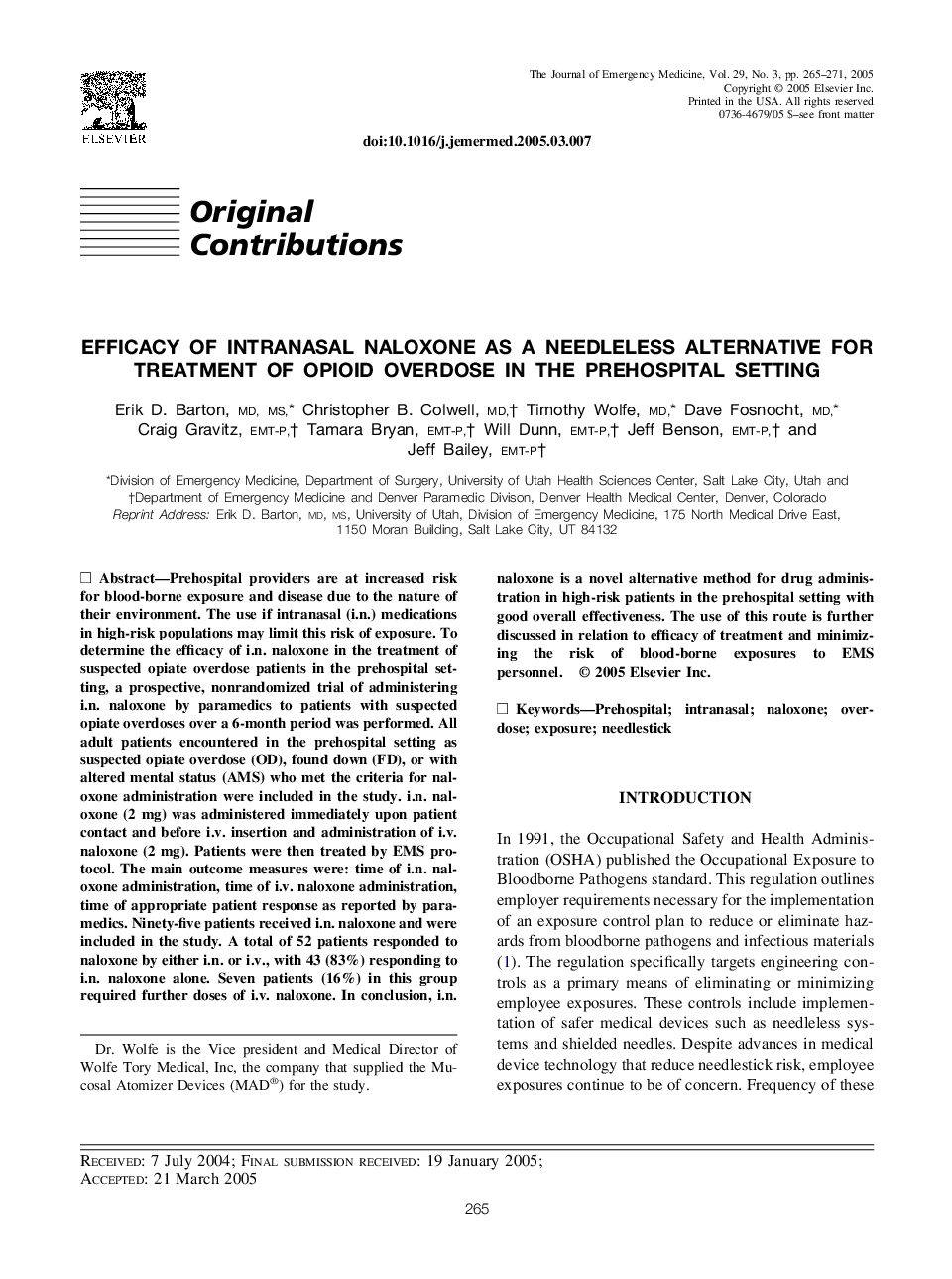| Article ID | Journal | Published Year | Pages | File Type |
|---|---|---|---|---|
| 10021655 | The Journal of Emergency Medicine | 2005 | 7 Pages |
Abstract
Prehospital providers are at increased risk for blood-borne exposure and disease due to the nature of their environment. The use if intranasal (i.n.) medications in high-risk populations may limit this risk of exposure. To determine the efficacy of i.n. naloxone in the treatment of suspected opiate overdose patients in the prehospital setting, a prospective, nonrandomized trial of administering i.n. naloxone by paramedics to patients with suspected opiate overdoses over a 6-month period was performed. All adult patients encountered in the prehospital setting as suspected opiate overdose (OD), found down (FD), or with altered mental status (AMS) who met the criteria for naloxone administration were included in the study. i.n. naloxone (2 mg) was administered immediately upon patient contact and before i.v. insertion and administration of i.v. naloxone (2 mg). Patients were then treated by EMS protocol. The main outcome measures were: time of i.n. naloxone administration, time of i.v. naloxone administration, time of appropriate patient response as reported by paramedics. Ninety-five patients received i.n. naloxone and were included in the study. A total of 52 patients responded to naloxone by either i.n. or i.v., with 43 (83%) responding to i.n. naloxone alone. Seven patients (16%) in this group required further doses of i.v. naloxone. In conclusion, i.n. naloxone is a novel alternative method for drug administration in high-risk patients in the prehospital setting with good overall effectiveness. The use of this route is further discussed in relation to efficacy of treatment and minimizing the risk of blood-borne exposures to EMS personnel.
Related Topics
Health Sciences
Medicine and Dentistry
Emergency Medicine
Authors
Erik D. MD, MS, Christopher B. MD, Timothy MD, Dave MD, Craig EMT-P, Tamara EMT-P, Will EMT-P, Jeff EMT-P, Jeff EMT-P,
